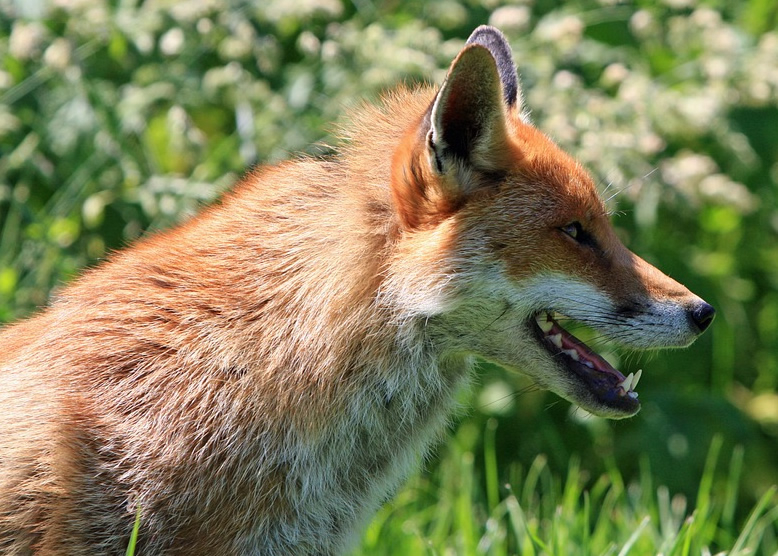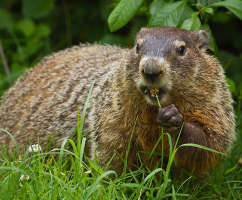Top 8 Predators of Chickens that Eat Chickens
Chickens are preyed upon by predators for a variety of reasons, including food, survival, and supplying food for their young. Some predators, like dogs, may ... read more...view chasing or catching chickens as fun or game, something ingrained in their breed, as opposed to eating them. Here is this article about predators of chickens that eat chickens.
-
The most frequent predators of chickens are species that prefer to pursue other birds, such as Cooper's hawks and sharp-shinned hawks. However, even eagles and red-tailed hawks may attack chickens if they are sufficiently hungry and have the chance. Although owls will hunt chickens as well, there is a minimal chance that they would harm animals in a safe coop and run because they only hunt at night.
Although they have been known to take advantage of openings in coops and runs that allow them to approach from above and surround their prey within the coop where the chickens have nowhere else to flee, birds of prey often strike while birds are free-ranging. Usually, only one bird is killed at a time. Birds of prey cannot gorge themselves since it would make them too heavy to fly, unlike predators that forage on the ground, and they also don't store food stashes as foxes do.
Raptors frequently pluck the ribcage bones clean in a particular way before devouring chickens. If you uncover the remains, you can rule out land predators since they won't leave tooth marks on the bones as other predators will. While bigger birds must be devoured on-site because they are too heavy to move, leaving a bloody scene behind, smaller birds like chicks and bantams may be entirely taken away, leaving no indication of the assault.

en.wikipedia.org 
www.dtnpf.com -
The domestic stray dog is really one of the most prevalent chicken predators. With some instruction from their owners, the majority of dogs can get along quite well with hens, but stray dogs or abandoned pets roaming free may not. Dogs are dangerous predators because they will murder every chicken they can catch for pleasure once they get access to the flock. The presence of other dogs may intensify this tendency, which frequently manifests as group behavior. Additionally, a dog is more likely to repeat a behavior if it has been successful in the past at attacking a flock of chickens in order to obtain food. Dogs are most likely to culprit if you discover several mounds of feathers or dead birds that have been killed and left where they are.
Despite occasionally being sighted in huge packs, coyotes typically hunt in pairs. Although they are generally nocturnal, coyotes are frequently sighted during the day. Originally diurnal, they have evolved more nocturnal behaviors as a result of adaptation to cope with human encroachment on their environment. Although coyotes often have a healthy dread of people, they may enter your yard in search of chickens if prey is rare, or if young that lack experience are . Coyotes are more tenacious in some places and may chase domesticated prey more intensively, even venturing into towns and suburbs.
Coyotes are less likely to squander food if they can hunt chickens than domestic dogs. It is doubtful that you will find any remnants of your chickens unless the animals are disturbed while eating since they will try to devour anything they capture. The most likely clue to your perpetrator will be tooth marks on dismembered bones.

www.nationalgeographic.com 
www.nationalgeographic.com -
The majority of the continental USA is home to the ubiquitous red fox species, which is well-known for its penchant for chicken. Foxes kill as many chickens as they can catch and store the carcasses for subsequent meals, unlike other predators like hawks or opossums which only kill one bird at a time. They can quickly sweep out a whole coop as a result in only one night, making even the smallest security breach utterly catastrophic.
Foxes are incredibly intelligent, resourceful, and powerful. They can gnaw through chicken wire, dig under fences, scale walls, and fit through narrow openings. Because they are so versatile, they aren't always deterred by the presence of human habitations because they appear to recognize instinctively when terrible weather or a human mistake has left the flock exposed. Due to the lack of their natural predators, foxes are far more prevalent in towns and urban regions than in rural ones, but they can still attack there, therefore it's necessary to protect yourself.
Foxes frequently steal chickens without leaving any signs of their predation, killing numerous chickens at once and stashing them. A strong but not overpowering skunk-like stench is a reliable sign that foxes have been around here. Other indications of a fox assault include buried chickens, heaps of feathers, or bodies with only the heads removed.

a-z-animals.com 
a-z-animals.com -
Weasels and minks are infamous for murdering chickens for amusement. Frequently, they'll murder some chickens, leave them to rot in the coop, and then go kill another. The skull and internal organs of the deceased chicken are occasionally consumed by these predators. These horrifying creatures wrap themselves around hens and bite them on the neck as a form of entertainment. They will eliminate a whole flock in a single night, or if they are unsuccessful, they will return repeatedly until all the chickens are dead.
Another serious threat to chickens is the weasel, another tiny, burrowing predator. Weasels and minks have been known to kill mature chickens despite their size. Weasels are nimble, astute, and voracious predators. A single weasel may destroy a small flock in a single night and to make matters worse, they may just bite the chickens' necks to drain their blood, leaving the rest to waste. They frequently hunt wastefully, much as raccoons do. A weasel behind the attack if you discover a dead chicken with lacerations or missing guts.

www.livescience.com 
www.livescience.com -
Raccoons are cunning creatures with exceptional dexterity, making them a dangerous foe of chickens. These cunning critters may manipulate things or unlock straightforward locks to enter the coop, in contrast to other animals that use gaps or other weak areas to get into the coop. They could even be able to capture chickens through fences, killing and eating the hens without ever entering the coop or running. Additionally, it appears that they take advantage of inclement weather by attacking during storms that might drop tree branches on the coop and run or blow open doors for them.
Besides, Raccoons are cunning animals that will work together to capture birds by frightening them to one side of the coop or running where another raccoon is waiting. They squander hunting resources as well. Raccoons frequently kill more chickens than they require, simply eating the neck and chest region. This is because raccoons will try to snare a chicken and drag it out by reaching through a fence. The raccoon will consume what it can reach and leave the remainder of the chicken if its complete body cannot fit through the fence. Another Raccoon assault can also be identified by their propensity to dismember their prey. A raccoon is probably the culprit if you discover a leg here, a wing there, and the head someplace else.

roundglasssustain.com 
en.wikipedia.org -
The opossum is referred to interchangeably as "possum". Opossums are not rodents, unlike what many people think, and they are not likely to be rabid. They are the only marsupial species that is endemic to North America. They are mostly scavengers, and despite their intimidating look, they rarely do anything. They are not powerful diggers and are not as cunning as other predators like raccoons or foxes, so they are unlikely to get inside a safe coop. However, they are adept climbers and will quickly penetrate an inadequately protected coop or run.
Opossums often prefer not to have to battle for their food and will hunt for eggs, chicks, or hens that are dumb enough to roost nearby. Targets for predators include chickens that roost on or near the ground, in sheds, or on nests. Opossums prefer to begin their meal with the soft underbelly, therefore hens who are still alive but have had their feathers removed on their belly or rear end may have been the target of an opossum attack. Additionally, opossums are thought to be responsible for the abdominal cavities of dead chicken corpses.
Opossums are fairly simple to protect yourself from and are often thought of as the least dangerous predators. Opossums are considered to be more aggressive and tenacious in some areas of the country when they are overpopulated, notably on the West Coast where they are not native. Although opossum may readily destroy a broody hen's nest of eggs or chicks in a single night, they typically only kill adult birds one at a time.

en.wikipedia.org 
cs-tf.com -
Skunks come in a variety of species in the US, some of which are referred to as "spotted skunks," but they all hunt similarly and provide comparable threats. Skunks often aren't big chicken hunters. Although they are mostly scavengers, they are also willing to attack nests and have even been known to steal eggs or chicks from broody hens. Skunk attacks on adult chickens are uncommon but possible.
Skunks spend most of their time at night and start looking for prey at twilight. It will withdraw to its lair at daybreak, which might be a rock pile, a ground burrow, or beneath a structure. Skunks usually feast on the eggs, and young chickens and may harm or kill the hens if they get inside the chicken coop.
Skunks, on the other hand, are opportunistic predators and will seize any chance that presents themselves. Therefore, it relies on several variables, including the flock, its age, and its size. Despite the toughness of chickens, certain wild creatures will nevertheless act by their instincts and kill them. When heading for the kill, skunks have a propensity of biting the heads and necks of chickens. They then rip out their necks and throats. They can start eating as much as they wish when the chicken dies instantly. So if you find feathers and animal remains in your coop one morning or eggshells that have been shattered and empty, sometimes with a whiff of the skunk's distinctive scent left in their path, are typically the first indication that a skunk has penetrated the coop.

en.wikipedia.org 
en.wikipedia.org -
In general, the variety of rat snake species is the one that bothers chicken owners the most. Some rat snakes develop a desire for eggs, and strangely, there have been instances where a ravenous snake has killed a chicken in an apparent attempt to consume it. Of course, a mature hen is far too little for even the largest rat snake to devour, so it is a waste, but luckily, such occurrences are quite uncommon. Though it is much more probable that the snake would consume your eggs and leave no sign of their loss, it may also devour young chicks if given the chance.
Because of their name, rat snakes are much more likely to consume rodents than chickens, but if they do start eating your chicks or eggs, you won't be able to identify the predator because they devour their food whole. Rat snakes may swallow many eggs or chicks at once, so if you find that four or five chicks have vanished mysteriously with no indication of struggle, a snake is probably to blame.

roundglasssustain.com 
roundglasssustain.com





























